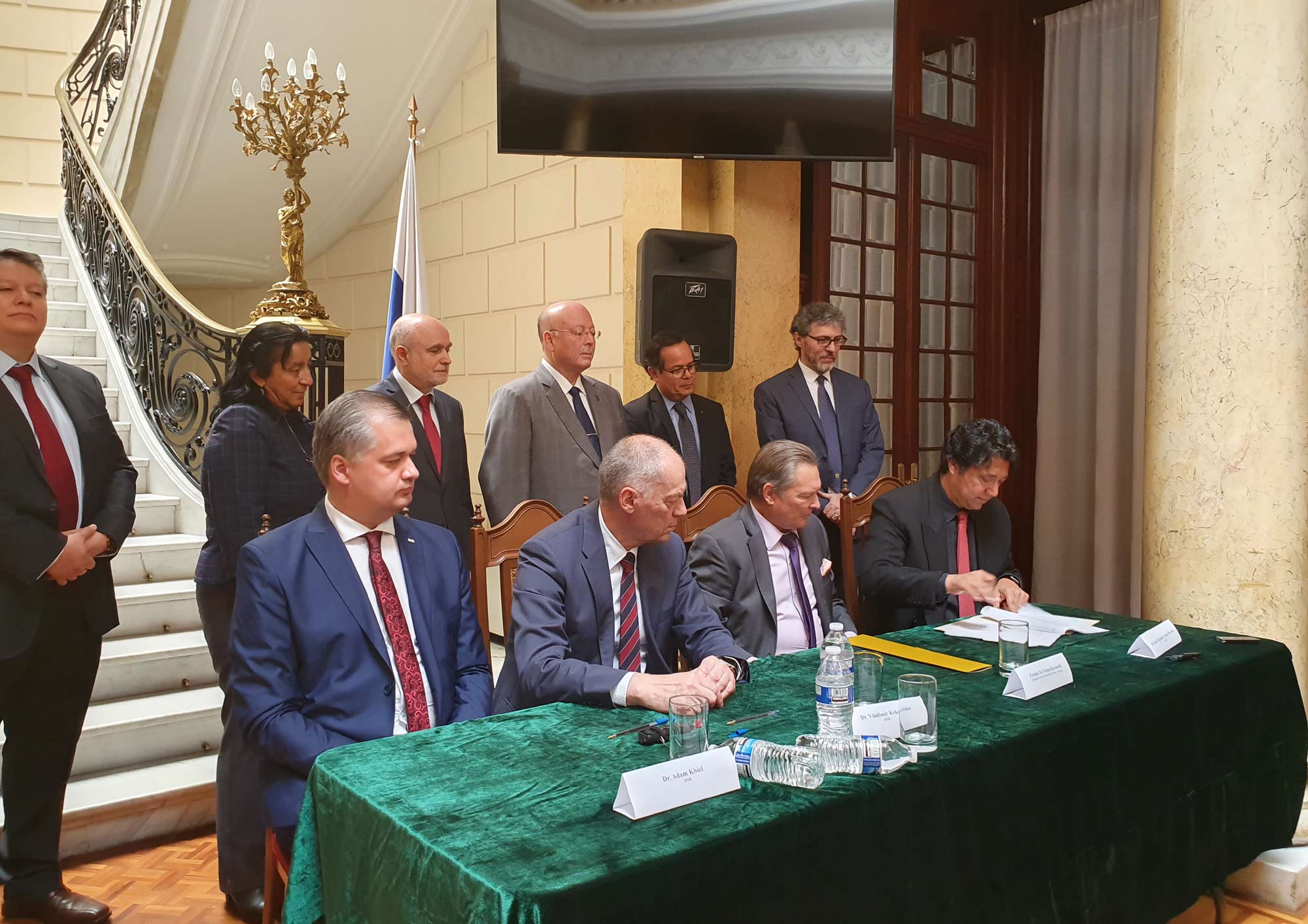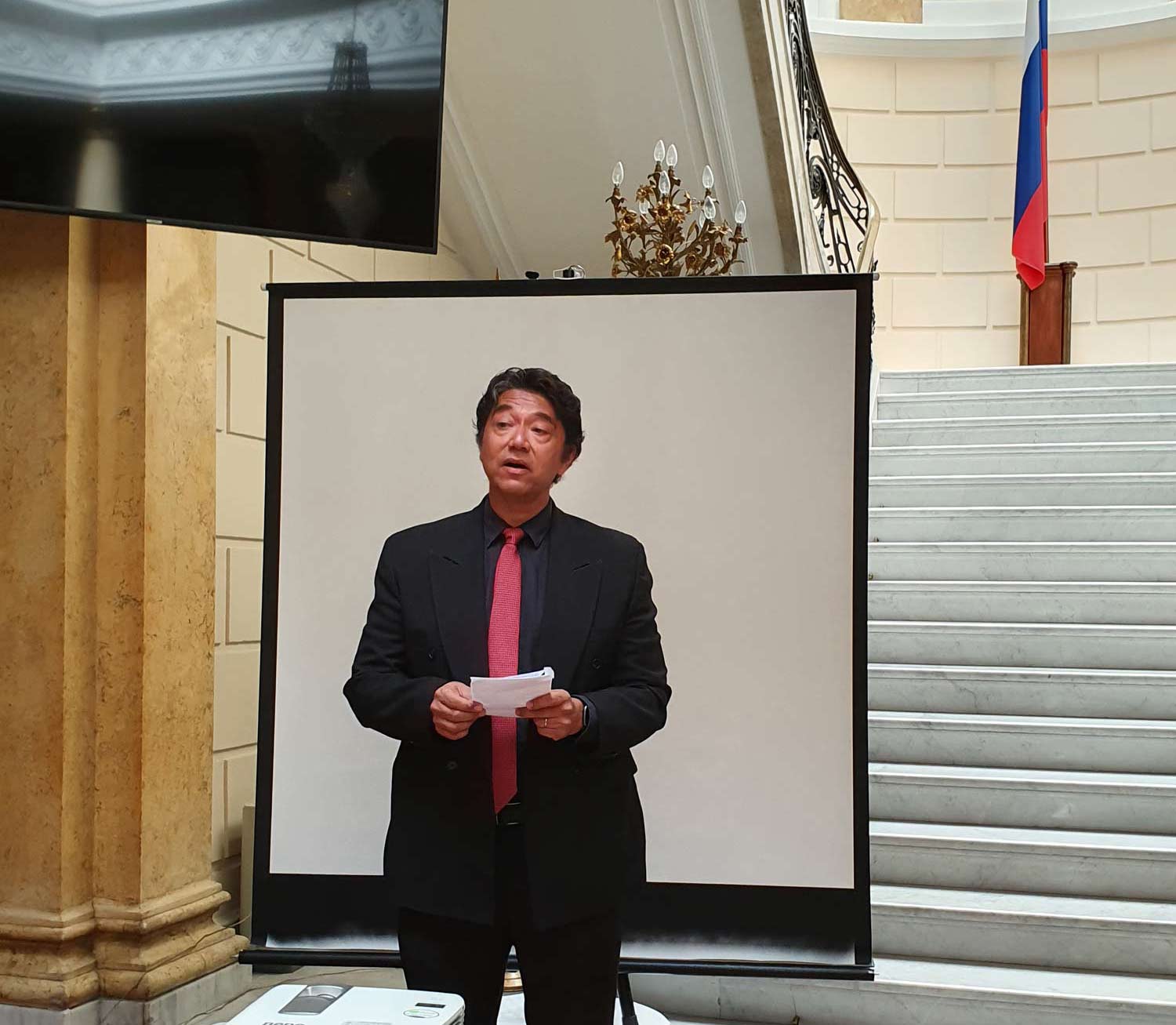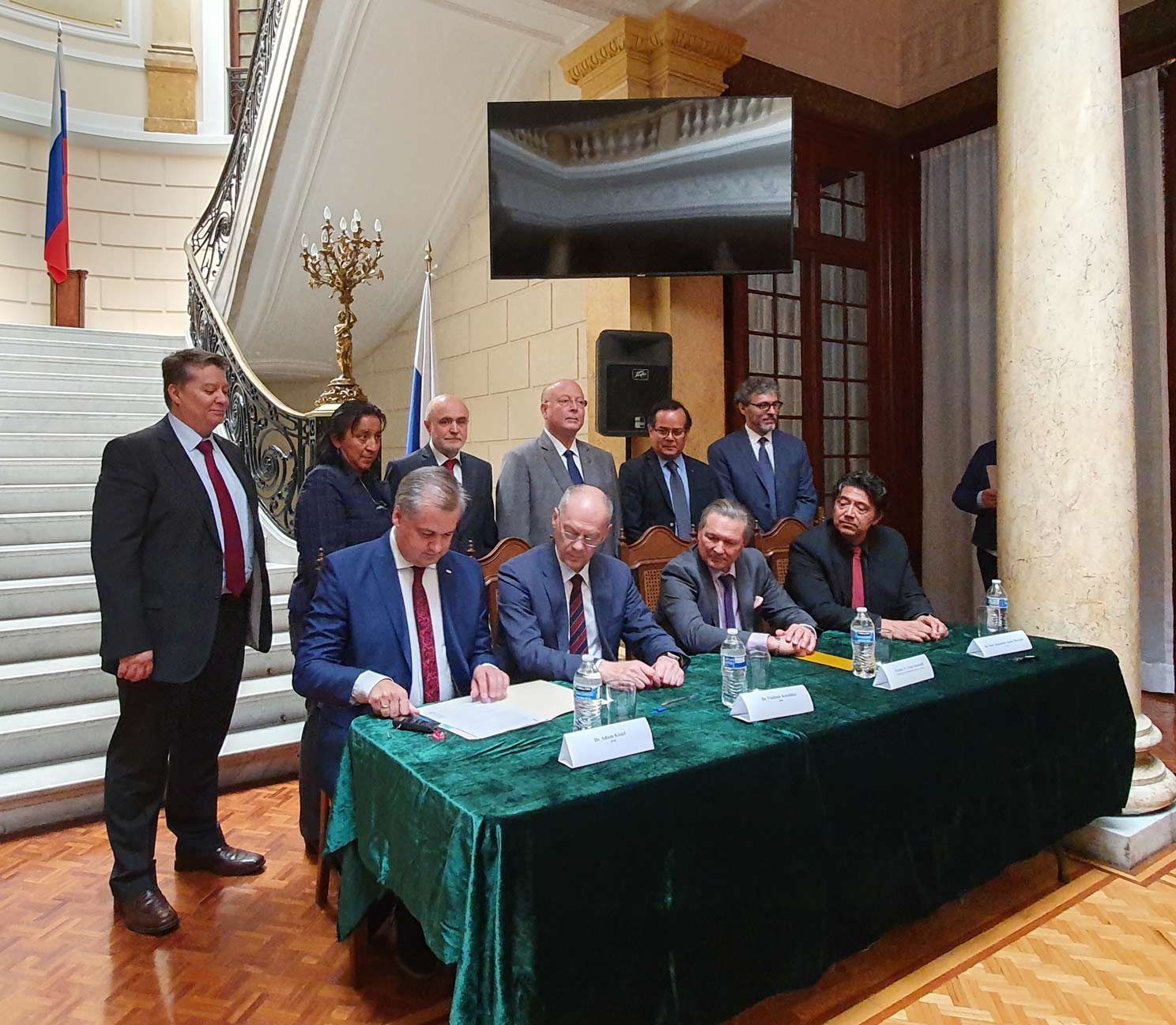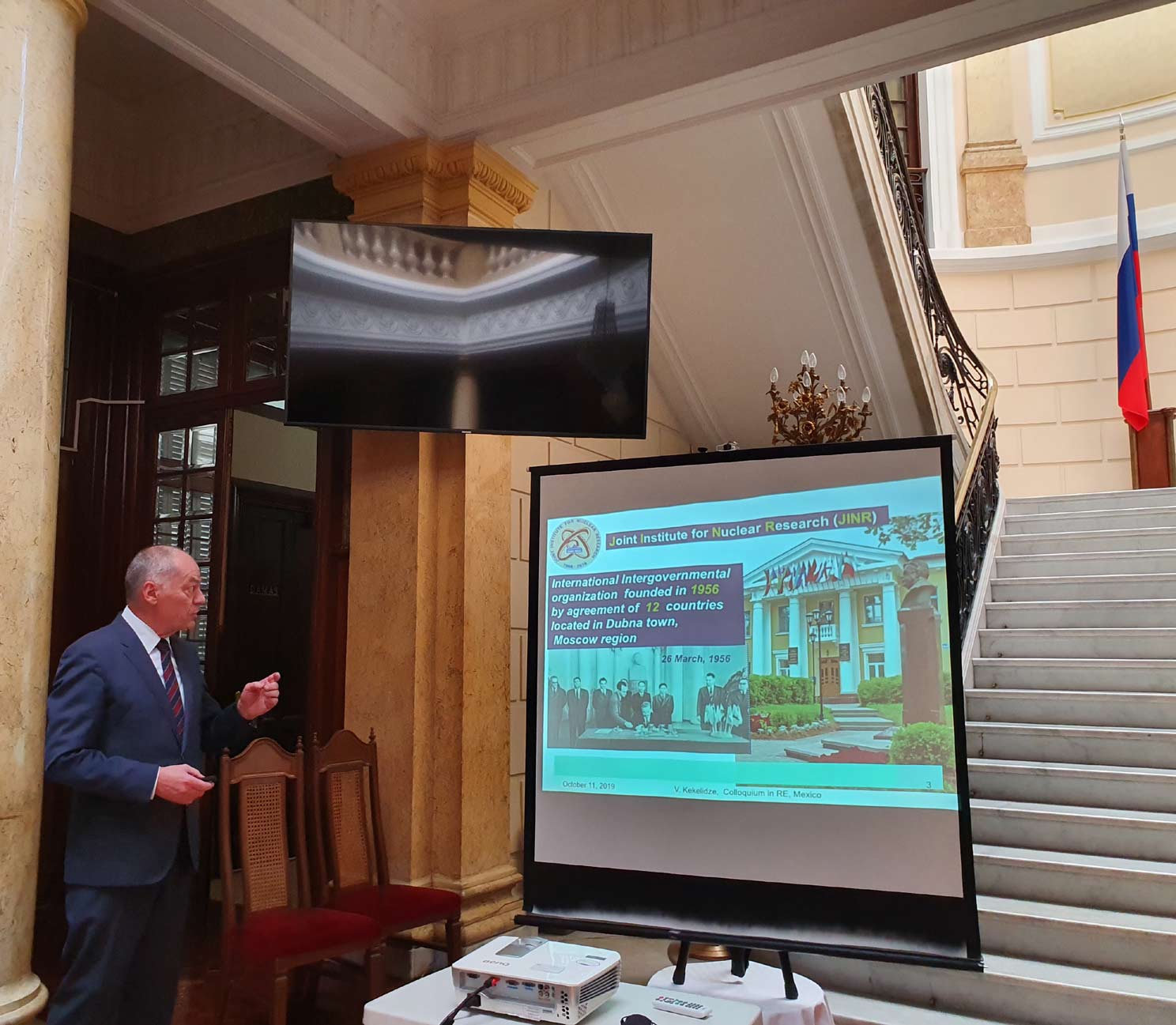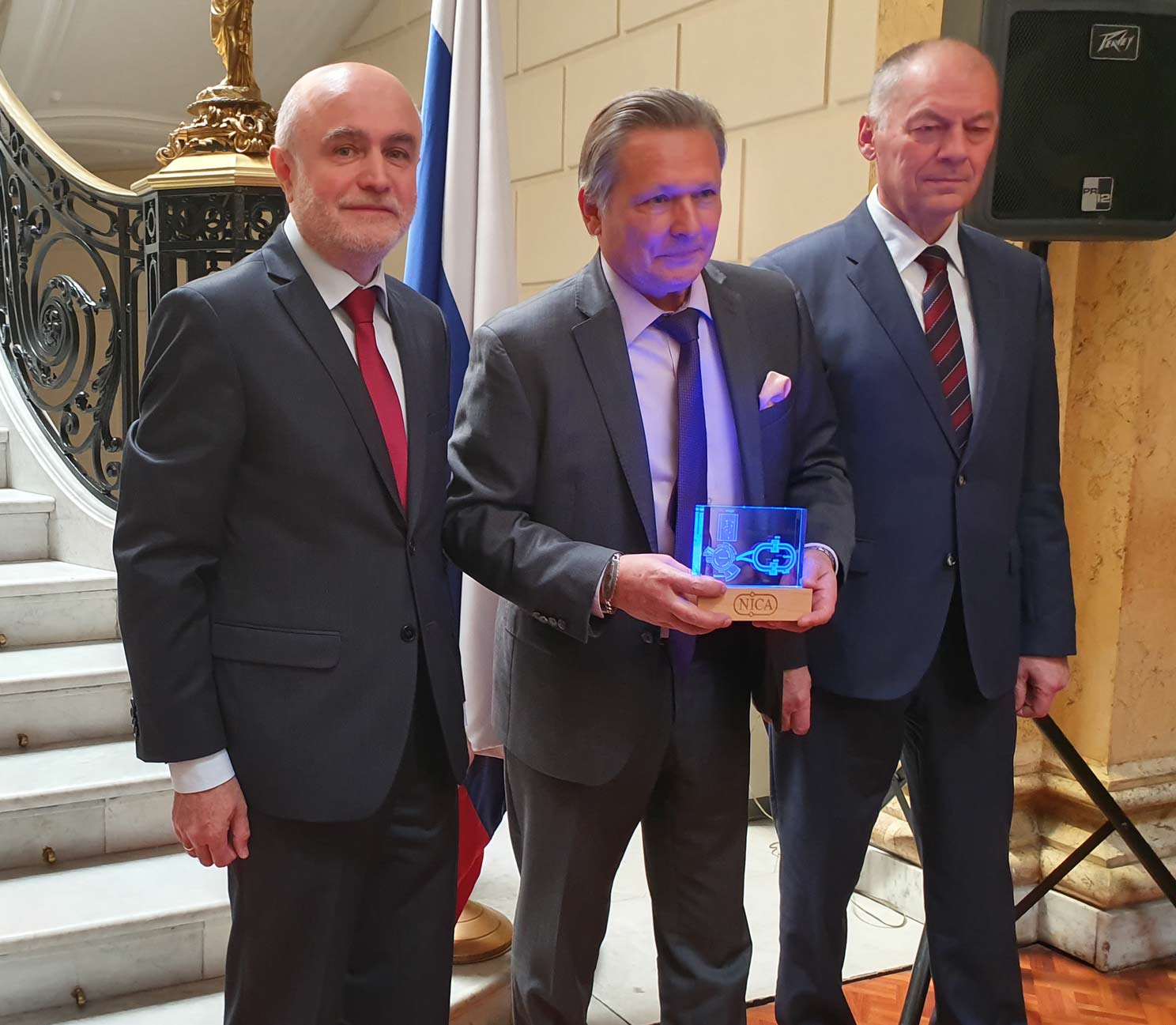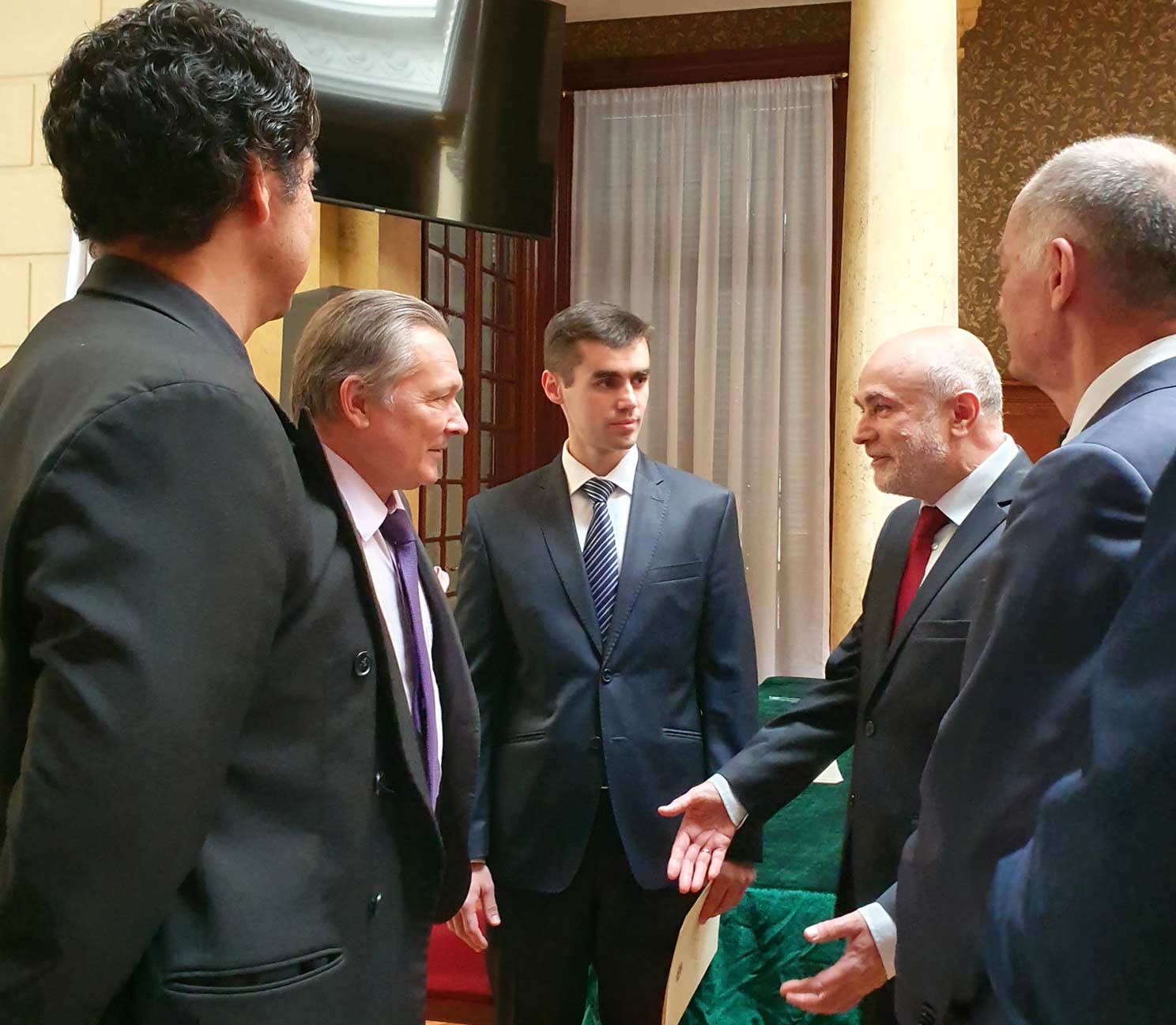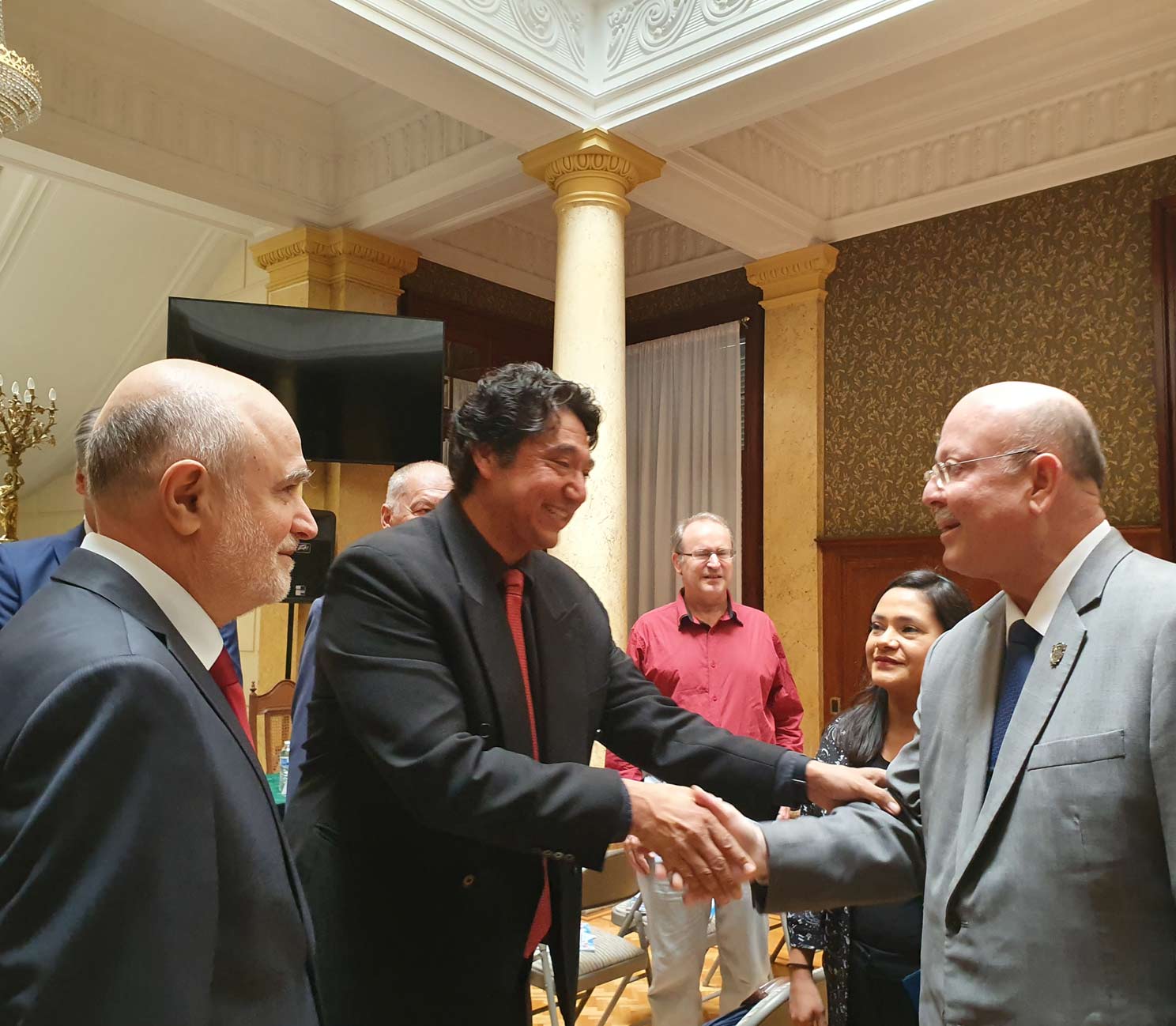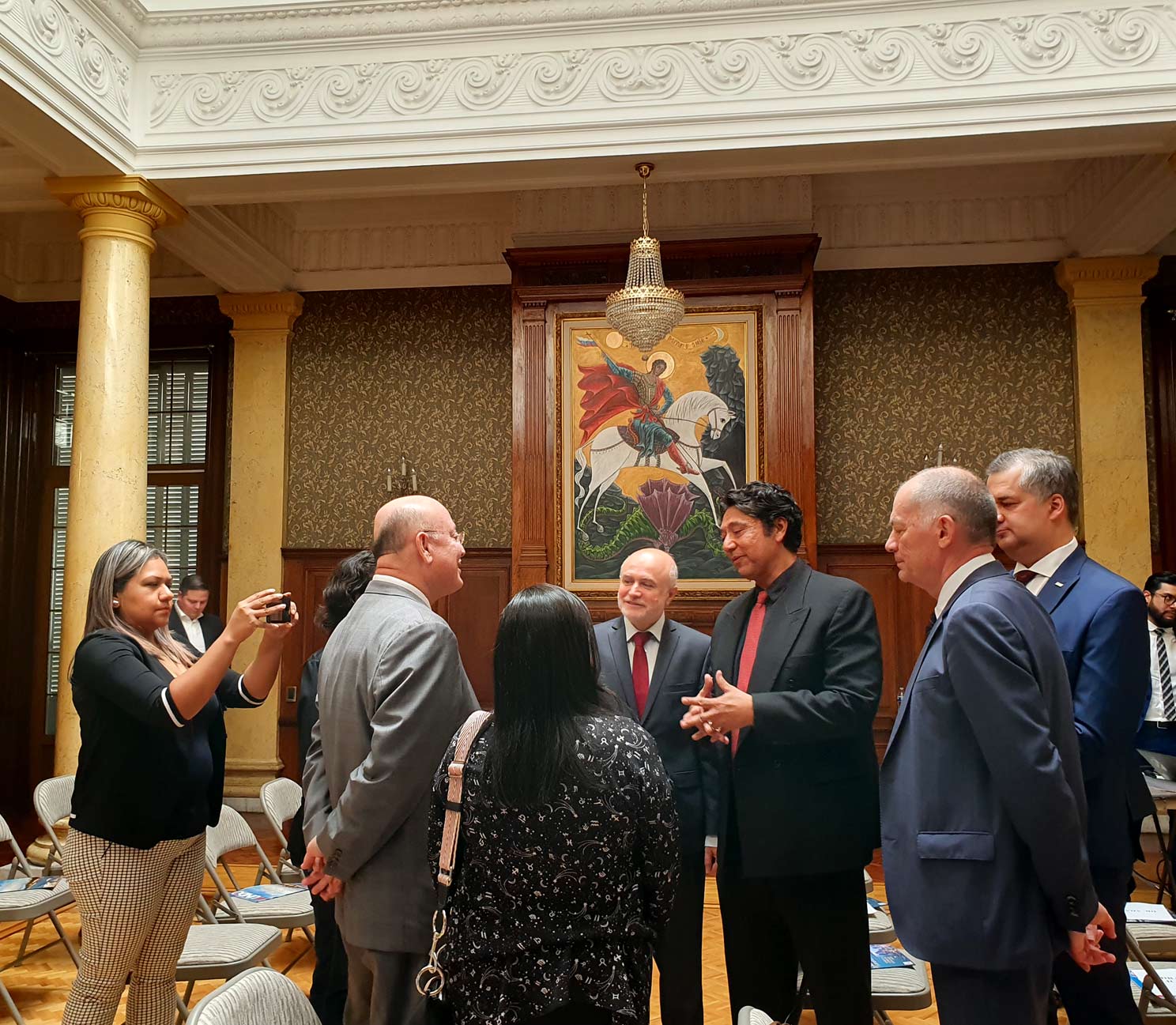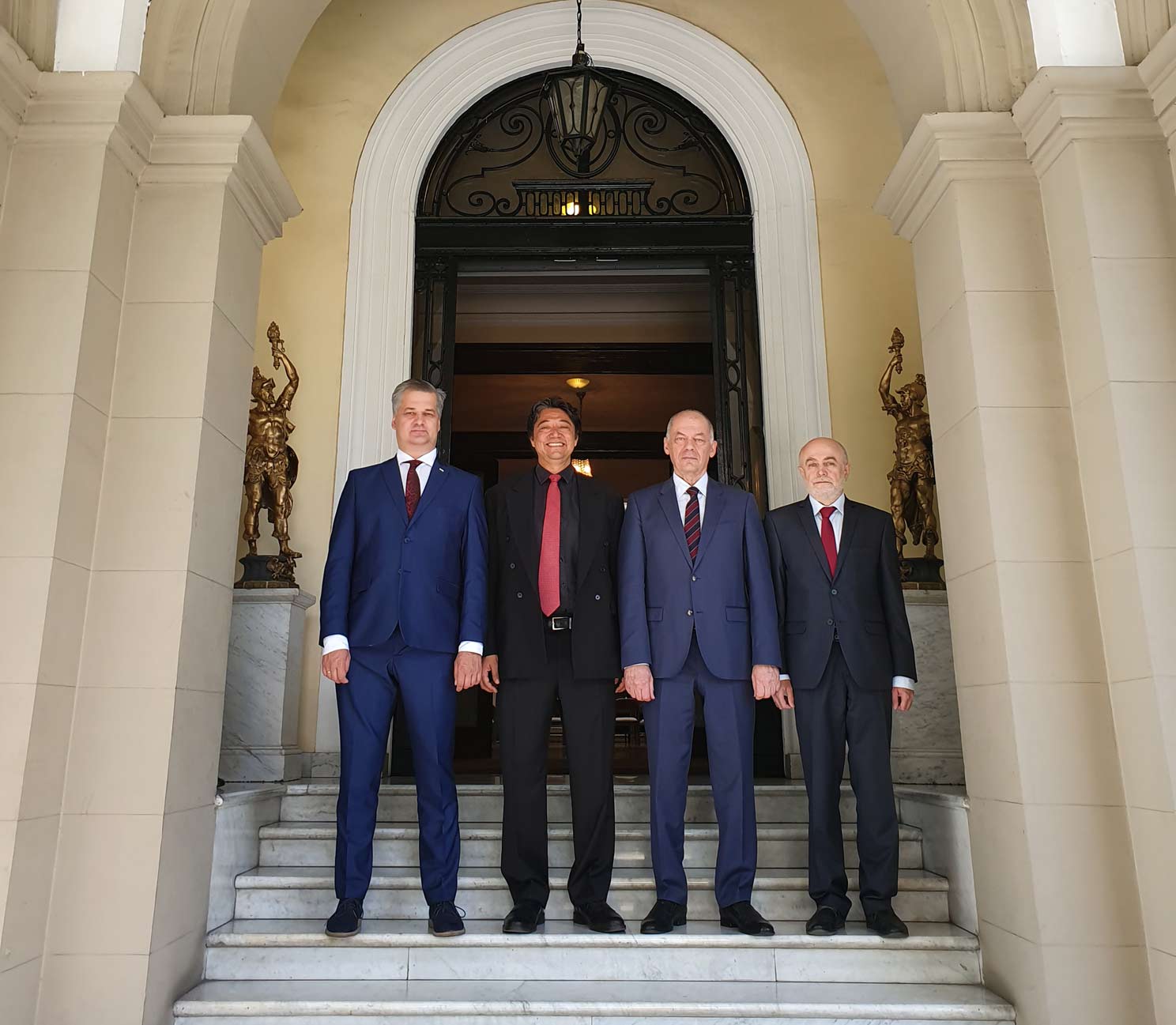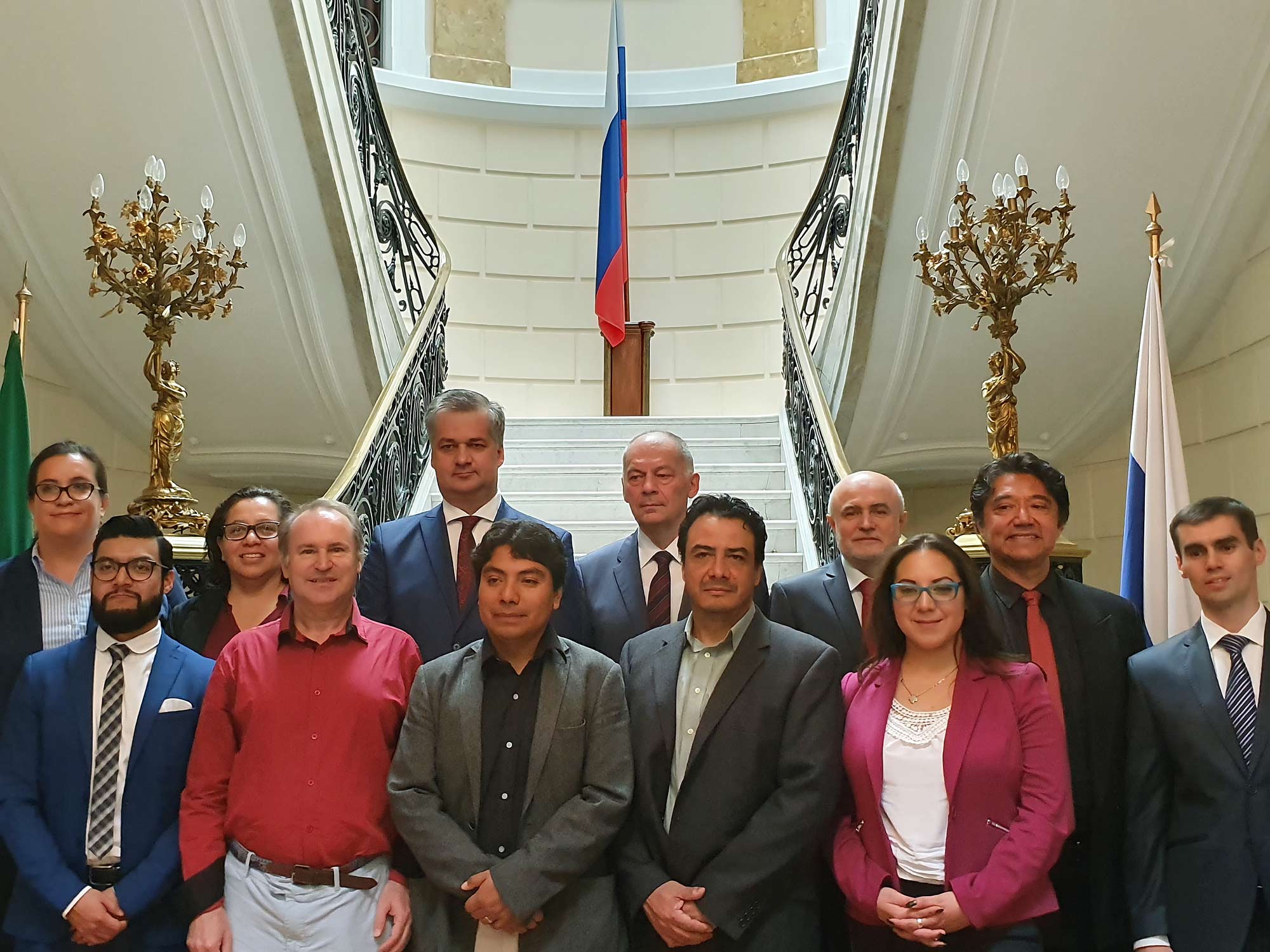Mexico officially joined the implementation of the NICA project
News, 17 October 2019
On 12 October 2019, a Memorandum of Understanding between the Joint Institute for Nuclear Research and a community of scientific and research institutes of Mexico was signed thus proving joint participation in the implementation of the mega-science project NICA. The document lays the basis for the establishment and development of the scientific cooperation between JINR and Mexican scientific centres for joint research in the fields of fundamental physics.
A festive signing ceremony was held with the participation of Ambassador of the Russian Federation in Mexico Victor Koronelli. The Joint Institute was represented by JINR Vice-Director, Director of the Laboratory of High Energy Physics Vladimir Kekelidze, JINR Chief Scientific Secretary Alexander Sorin and Head of the MPD Collaboration Adam Kisiel. Rectors of universities, heads of scientific centres and leading scientists of the country took part in the ceremony on behalf of the Mexican part.
Leader of the community of Mexican scientists participating in NICA (MexNICA Collaboration) José Alejandro Ayala from the National Autonomous University of Mexico noted in his solemn speech that signing of this document provides the official means for a group of scientists from Mexico to continue the journey into the future together with scientists from all over the world, to try to unveil some of the fundamental questions in physics, by contributing to the efforts of the NICA project. Later on, José Alejandro Ayala highlighted in the interview to the TASS journalists that singing of the Memorandum was of crucial importance to Mexico as far as it acknowledged the high proficiency of Mexican scientists and the importance of their work. According to Ayala, ten scientists in the fields of high energy physics, as well as fifteen students and postgraduates, take part in the project on behalf of Mexico.
In the conversation with Russian journalists in the Russian Embassy in Mexico, VBLHEP Director Prof. Vladimir Kekelidze said: “Such projects as NICA are large-scale, and they may be implemented not only by a single institute but also by a whole country, CERN (the European Organization for Nuclear Research) has demonstrated it. Such projects need the participation of numerous countries and institutes in order to be implemented.”
Due to Vladimir Kekelidze, colleagues from Mexico suggested construction a detector that would study the intensity of the interacting beam. “It is what we lacked in our project, we did not have enough staff and opportunities to do,” he noted. “It will be an important device for us <...> We hope that they will make this detector, bring it to us, install and then use it, and will be responsible for it and take part in the general analysis.”
The initiative to join the project was made by Mexican scientists. “In fact, they have already started their work and have already visited us, made a particular contribution. However, today we have formalized it by signing the Memorandum of Mutual Understanding with all the participating parties,” Kekelidze specified. “Having gained the official status, they will be able to ask the financing organizations for more effective support.”
Nowadays, 1.5 thousand scientists and engineers from 19 countries are involved in the NICA project. “It is just the beginning, the project lacks specialists. We estimate that there should be more than 3 thousand of them. That is why our task is to involve as many specialists as possible,” Kekelidze added. “Despite all the political tensions, even specialists from the USA – from MIT (Massachusetts Institute of Technology) – already work with us, and young people are coming to us and want to work in the project.”
It should be noted that in the course of a one-week visit to Mexico, the JINR delegation did not only sign the Memorandum but also presented 15 reports on JINR activities and the NICA project at Mexican universities participating in MPD/NICA. Numerous meetings were organized with both heads of these universities, their students and staff members, and heads of funds backing them. At those meetings, the parties discussed prospects for the participation of Mexican scientific organizations in the JINR scientific projects, in the NICA project, particularly.
The NICA collider (Nuclotron-based Ion Collider Facility) is an international project implemented in the territory of Russia. The NICA accelerating complex is being constructed on the JINR basis in Dubna. NICA is one of the two mega-science projects that are currently supported by the Government of the Russian Federation. This complex under construction will be equipped with an MPD multi-purpose detector to conduct experimental studies of hadron matter and its phase transitions, an SPD detector to explore the spin effects, and a BM@N detector to study baryon matter. NICA was included in the ESFRI Roadmap. The construction of the complex started in 2010. The collider is expected to achieve its full capacity in 2023.
Following information of JINR Directorate, TASS and RIA News information agencies
Photos are provided by the JINR delegation
